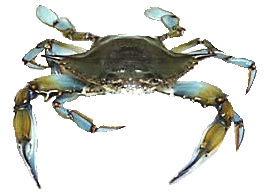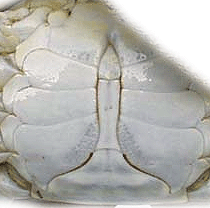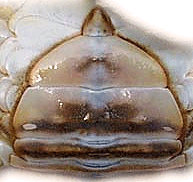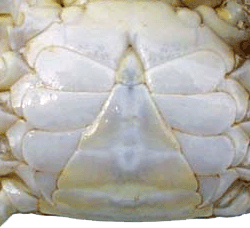|
|
|
||||||||||||||||||||
|
Blue crabs are one of the best known of the American hard shell crabs and form part of the basis of the crab meat industry. With a rich sweet flavor and tender flaky meat. The blue crab is caught along the Atlantic coast, particularly in the Chesapeake Bay area.
Jimmies (male crabs) are larger and meatier than sooks (females). Male crabs or Jimmies are distinguished by a T shaped marking on their abdomen that resembles the Washington Monument. An immature female blue crab, called "She-Crab" or "Sally," has an inverted "V" shaped apron while a mature (adult) female blue crab, or "Sook," has an inverted "U" shaped apron. An easy way to remember this is to imagine that a female crab has a picture of the U.S. Capitol Building on her abdomen, also female crabs "paint their fingernails"; (i.e., have bright red claw tips.) Male crabs do not. Storage and Handling Blue crabs must be alive before cooking. To check tap, live crabs will raise their claws. Foaming indicates that the crabs are dying. Crabs can stay alive for up to five days under refrigeration Season: All year Weight 1/4 to 1 lb.
|
|||||||||||||||||||||
|
|
|||||||||||||||||||||

 Blue Crab
Callinectes sapidus
Hard Shell, Blue Claw, Buffalo
Blue Crab
Callinectes sapidus
Hard Shell, Blue Claw, Buffalo

